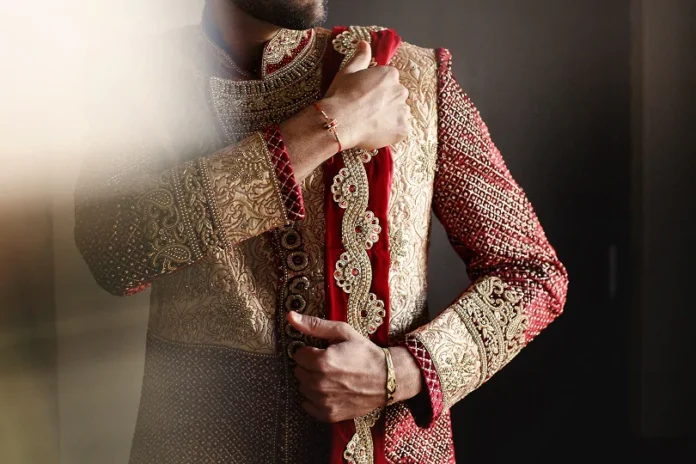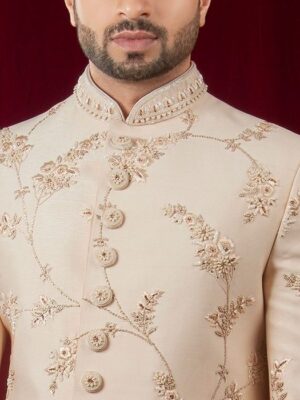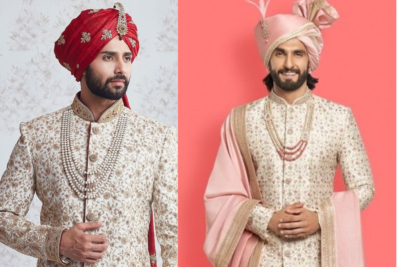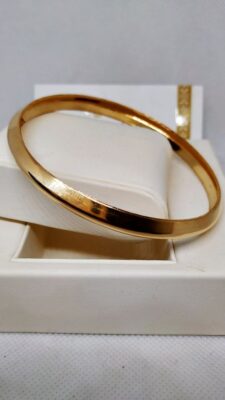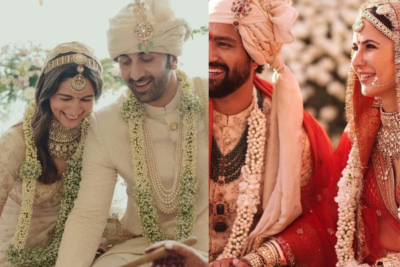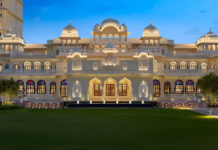Transform your space with stunning ornamentals
The bride is typically the focus of attention when it comes to attire and accessories at Indian weddings, which are renowned for their grandeur and luxury. But the groom’s clothes and accessories are just as crucial and can have a big impact on how the wedding party looks as a wholSherwani Buttons.
Sherwani buttons are ornamental buttons specifically designed for traditional Indian men’s attire known as sherwani. The groom’s sherwani buttons are often chosen with great care and attention to detail to ensure they complement the overall look and style of the groom. The buttons are placed along the front opening of the sherwani coat. They serve both functional and decorative purposes, allowing the wearer to fasten and secure the garment while adding a touch of elegance and grandeur. Groom’s sherwani buttons are often made from premium materials such as gold, silver, or brass. These buttons may be intricately engraved or embossed with traditional patterns or motifs, reflecting the rich cultural heritage of Indian weddings. The design of the buttons should harmonize with the overall embroidery, embellishments, and colour scheme of the sherwani. Depending on the groom’s preference, sherwani buttons can be adorned with gemstones, crystals, pearls, or other decorative elements to add a touch of opulence and sophistication. Groom’s sherwani buttons are typically larger compared to regular buttons to make a bold statement. They are strategically placed along the front opening of the sherwani, following a symmetrical pattern. To add a personalized touch, some grooms opt for customized sherwani buttons. These buttons can be personalized with the groom’s initials, family crest, or other meaningful symbols. Sherwani buttons for the groom are more than just functional closures; they are an opportunity to showcase the groom’s style and attention to detail. By selecting buttons that complement the sherwani and reflect the groom’s individuality, he can achieve a truly remarkable and distinguished look on his wedding day.e. This post will cover Indian wedding jewellery options for groomsmen and offer advice on selecting appropriate accessories for your special day.
Safa (Turban)
The Safa, also known as a turban, is a traditional and symbolic headgear worn by men in various regions of India, especially during special occasions and ceremonies like weddings. The Safa holds cultural significance and adds a regal touch to the groom’s attire. Safas are typically made from a long fabric, often silk or cotton, which is intricately wrapped and tied around the head to form a turban. The fabric can be plain or adorned with patterns, motifs, or embroidery. The length and width of the Safa can vary based on regional styles and personal choices. Some Safas are long and elaborate, while others may be shorter and simpler. The width of the Safa can determine the overall shape and volume of the turban when it is wrapped around the head. The draping technique can vary from simple and elegant to intricate and elaborate. Some popular safa styles include the Rajasthani Pachedi, Marathi Pheta, Punjabi-style Pagri, or the Mysore Peta from Karnataka. To enhance the Safa’s appearance, it can be adorned with embellishments such as brooches, jewels, tassels, or Kalgi (a decorative ornament). While traditional Safas continue to be popular, there has been a growing trend of incorporating modern elements into the design of Safas. This includes using contemporary fabrics, incorporating unique patterns or prints, or experimenting with different draping styles to create a fusion of traditional and modern aesthetics.
Kada (Bracelet)
For grooms, Kadas can be a meaningful and stylish accessory to enhance their wedding attire. Groom’s kadas are often made from precious metals such as gold or silver. These metals symbolize prosperity, wealth, and traditional values. The Kadas can feature various designs, ranging from simple and elegant to intricate and ornate. Some Kadas may have a smooth and polished surface, while others may be engraved or adorned with gemstones or enamel work. Kadas can incorporate symbolic elements that hold personal or cultural significance. These can include auspicious symbols, religious motifs, or engravings of meaningful words or phrases. Such elements add depth and significance to the Kadas.
Mala (Necklace)
The Indian groom’s necklace, commonly referred to as a “haar” or “mala”, holds deep cultural significance in Indian weddings and ceremonies. This ornamental necklace is a symbol of tradition, prosperity, and auspiciousness, and it is worn by the groom as a part of his wedding attire. The design of the Indian groom’s necklace can vary widely based on regional customs, family traditions, and personal preferences. Some grooms opt for classic gold or gold-plated necklaces adorned with intricate patterns and motifs, while others may prefer necklaces embedded with precious gemstones like rubies, emeralds, or diamonds. Additionally, the length and style of the necklace can vary, ranging from short and subtle to long and elaborate. Regardless of the specific design, the Indian groom’s necklace serves as a focal point of his attire, adding a touch of elegance and grandeur to the wedding ensemble.





